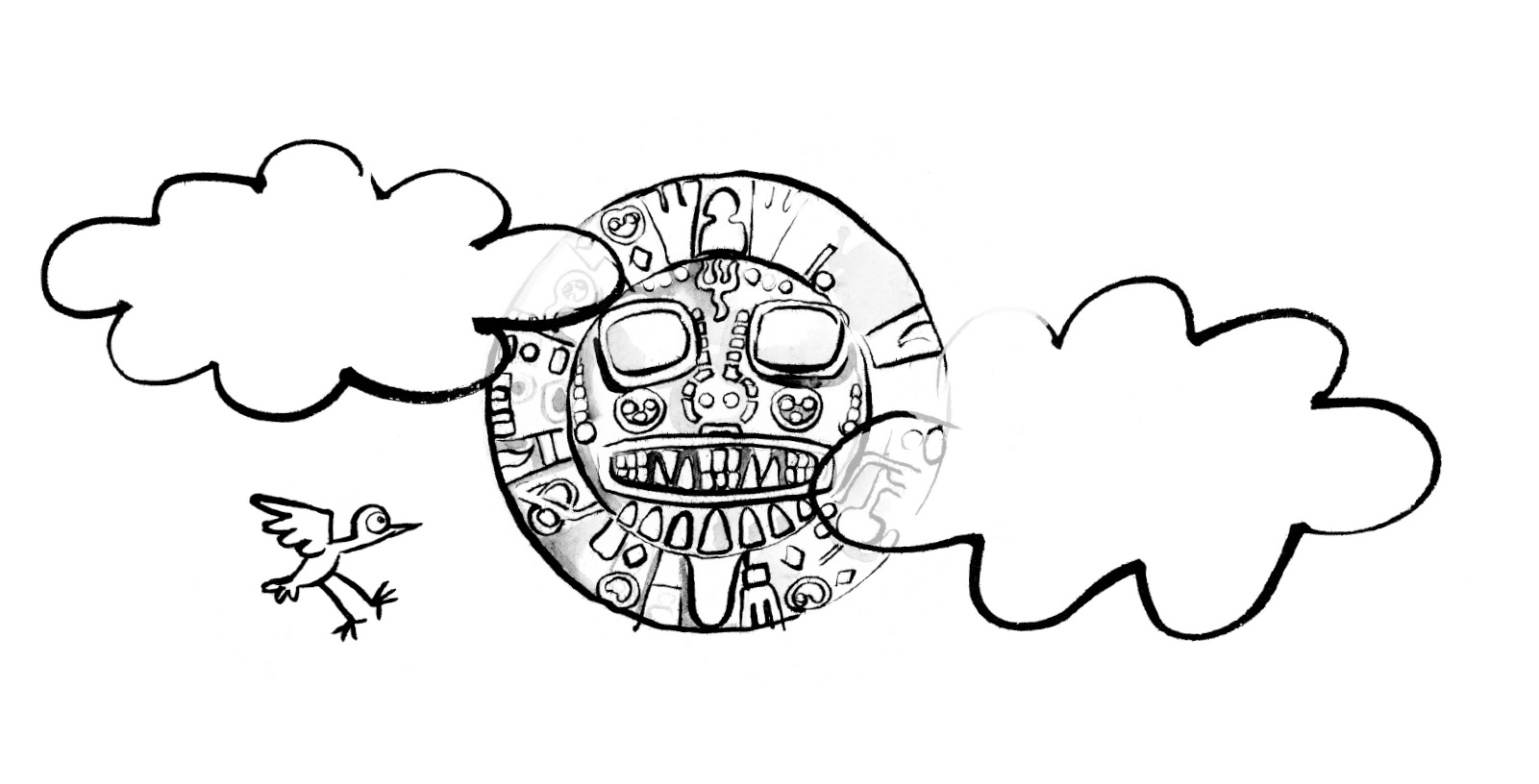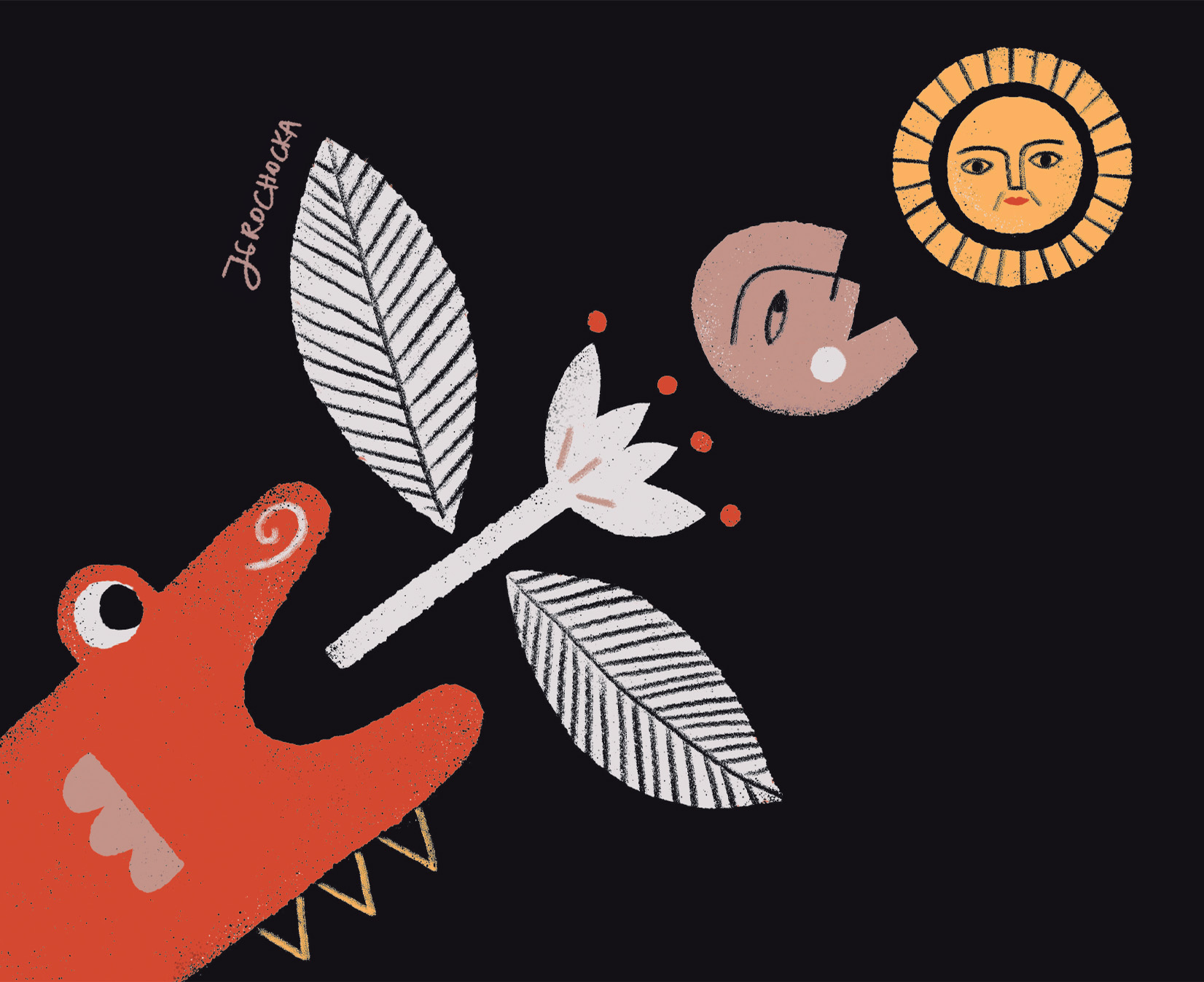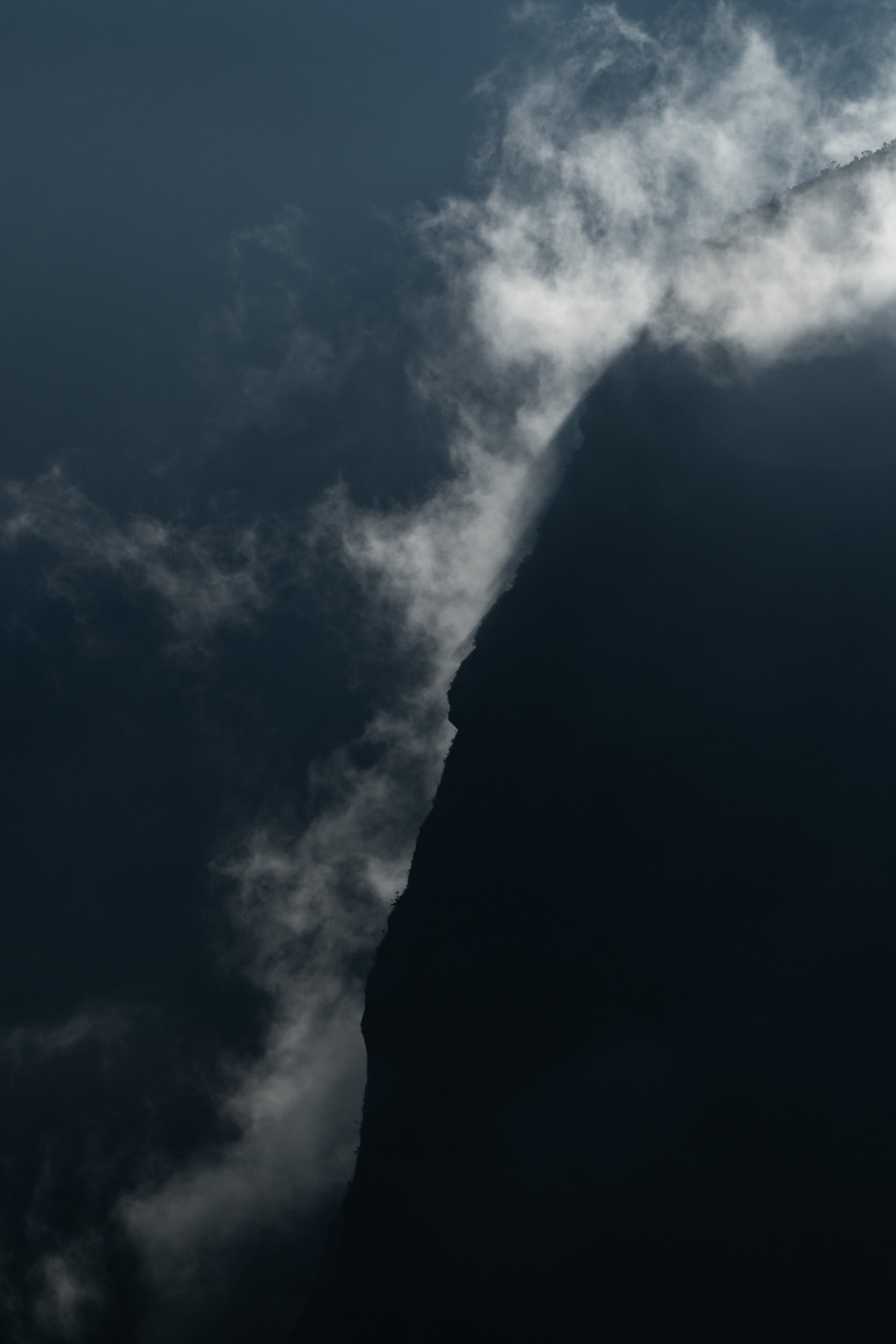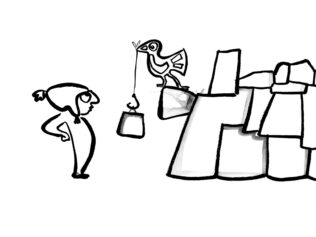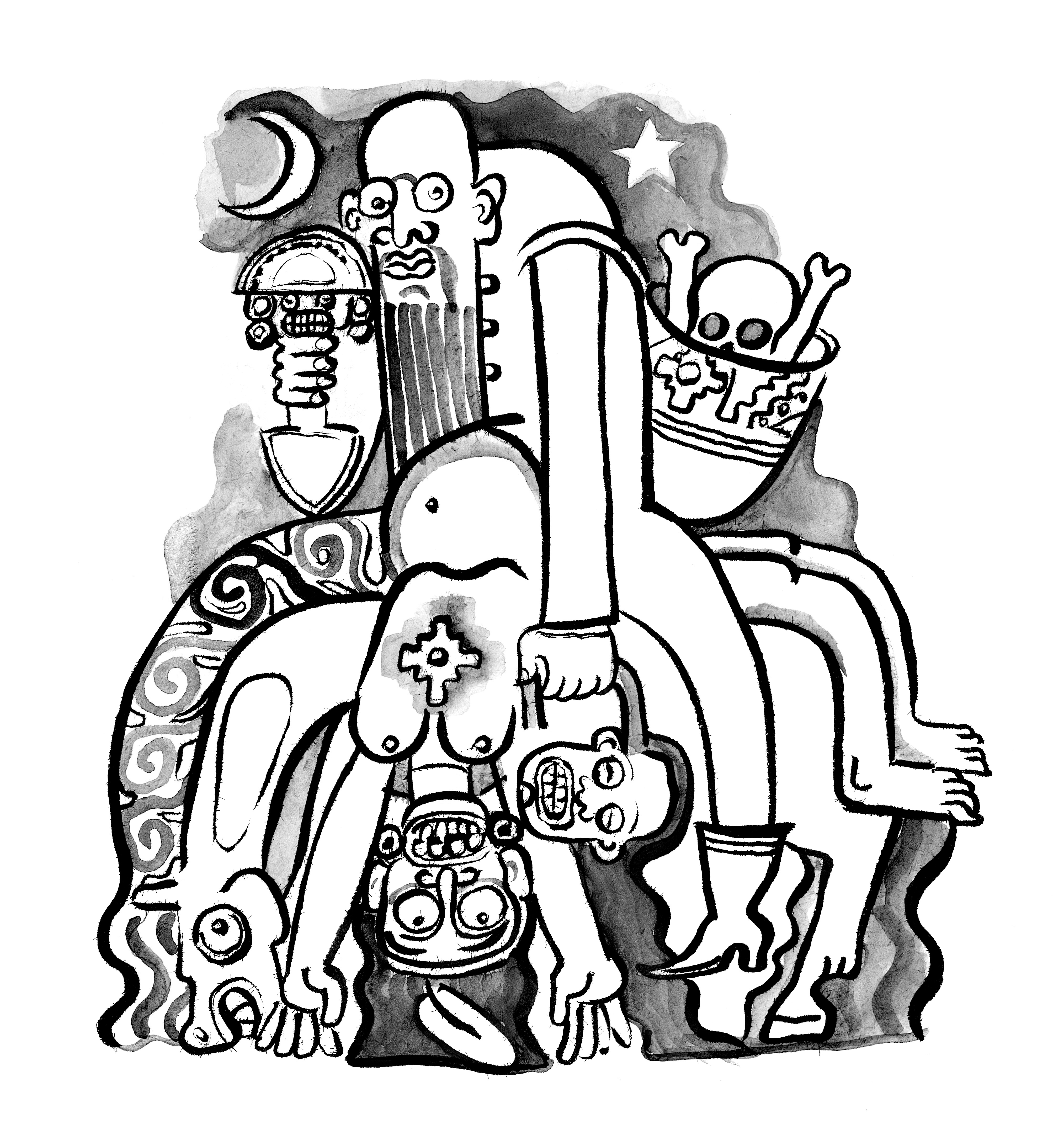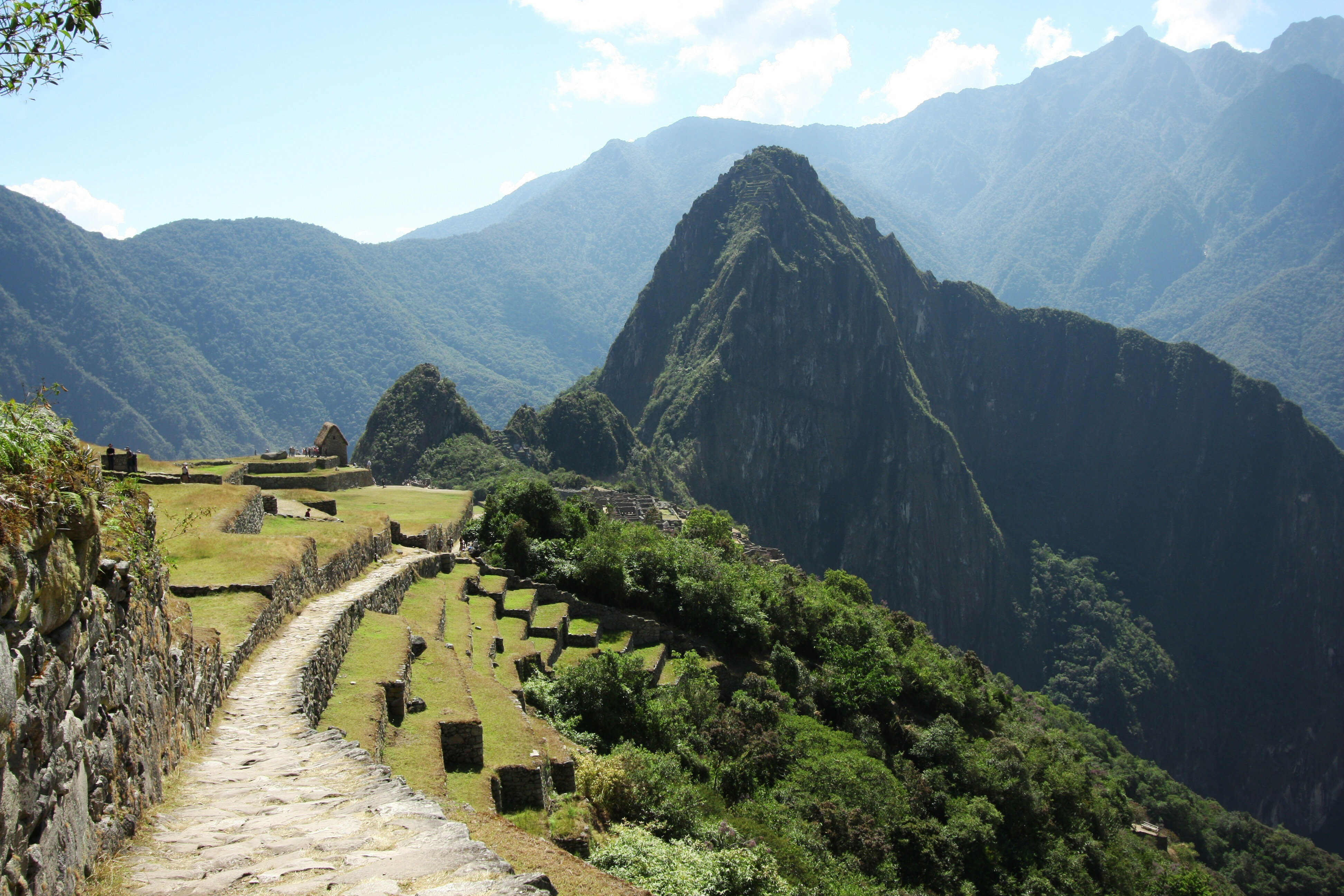
According to the Indigenous people of the Andes, this is where the world was created. This is also where the Inca people first appeared. What does life on Lake Titicaca look like today?
In the beginning, all was darkness. The sun, stars and moon didn’t exist yet. Then, the Creator God – Apu Qun Tiqsi Wiraqutra (in Quechua, ‘Man from the Sea Foam’, or simply, Viracocha) – came forth from Lake Titicaca and the miracle of creation began. Human giants appeared on Earth, wandering in the dark. Viracocha said that that the world would be beautiful. The giants lived peacefully until they angered the Creator by being disobedient. He flooded the Earth and turned the giants into stones, which are located today in Tiahuanaco, near the ‘holy lake’.
The Creator made another attempt, though. He left his two sons, Imaymana Viracocha and Tocapo Viracocha in Tiahuanaco, and decided to create humans once again. This time, they were smaller, but smarter. They were made from clay and stones, which back then were still soft. He created men, women and children. He divided them into nations and gave to them languages, songs, seeds, vegetables and other foods, so that they wouldn’t starve. He created civilization, liberating humans from primordial barbarity. The Creator presented the humans with laws, established a hierarchy, and taught them how to cultivate the land and worship gods. Before this happened, however, the sun, moon and stars emerged from the lake, from where they hang above in the sky.
Viracocha also brought to life the sun god Inti (who claimed, however, that it was the other way around and that it was he who created Viracocha) and his wife Mama Cocha, the sea goddess. All this happened when the Creator was standing on the island called Isla del Sol (Island of the Sun) in the Bolivian part of Titicaca. The first humans were named Manco Capac (Son of the Sun) and Mama Ocllo (Daughter of the Moon). After they procreated and populated nearby lands, Viracocha ordered his sons to gather them all and go north-west – where Cusco is nowadays. Off they went and their empire was created.
A puma hunting a rabbit
The Inca religious doctrine justified their conquests. As the chosen people, their role was to establish order and maintain harmony in the world. The fact that Viracocha was the god of the Aymara people didn’t bother them, since they integrated into their culture the beliefs and myths of the nations they conquered. Yet it took some time before Viracocha became so important to them. Initially, he remained in the shadow of Inti, who was the greatest in the pantheon. Time worked towards Viracocha’s advantage, though, as he met the Inca need for metaphysics and the Absolute. Inti, as a less complex god, didn’t stand a chance here.
One element of this origin story has stayed unchanged for ages: Lake Titicaca, located on the Altiplano plateau. Located on the border of Peru and Bolivia, Titicaca seems more like a sea: it’s 190-kilometres long and 80-kilometres wide. It’s the highest navigable lake in the world at 3815m above sea level. It’s also very deep, with a maximum depth of 300 metres (its average depth is 140-180 metres) and large, extending over 8372 kilometres. In the Quechua language, Titicaca means ‘a puma hunting a rabbit’ – apparently that is how its water basin is shaped according to former inhabitants of the area. For the descendants of the Inca, as well as the Aymara people, Lake Titicaca is a holy place, where everything began.
Apart from the fact that the mythical Viracocha emerged from this lake, as the latest research of Peruvian scientists has shown, it was also the cradle of the Inca civilization, which dates back to the 12th century. By the 15th century it was already an empire, comprising the territories of today’s Peru and Ecuador, as well as parts of Bolivia, Chile, Colombia and Argentina. Its capital was Cusco. The descendants of Indigenous people make up a substantial part of the population of these countries, especially of Bolivia and Peru, located on the Altiplano plateau. Nevertheless, they are often marginalized and hold little political power. They are becoming increasingly vocal about their needs, demanding the right to self-determination, respect for their history and culture, and equal treatment. Their ideas about what constitutes autonomy vary considerably, though.
Community collectivism
I’m on my way to Puno, a port on the Peruvian shore of Lake Titicaca. Many of its inhabitants are representatives of pre-Columbian ethnic groups: the Quechua, Aymara and Uros. It’s a good starting point for travelling to one of the local islands: Amantani, Taquile, Suriki or Isla del Sol. They are collectively referred to as the ‘Floating Islands’ and are constructed by the Uros people from reed. We’re sailing on a rented boat to Taquile, which is a small, rocky island. To get to the main village, I need to climb endless stairs – the island’s highest point is 4050m above sea level. It needs to be specified, however, that on Lake Titicaca the expression ‘sea level’ is of little significance. Much more relevant is ‘lake level’ (at 3815m, so the difference isn’t that surprising).
Taquile is located on the Peruvian part of the lake, around 35 kilometres away from Puno. It’s seven-kilometres long and two-kilometres wide. Its population is around 2200 and mostly includes descendants of the Inca. It’s an ethnically and culturally unique community. On Taquile, there can be found pre-Inca agricultural terraces and ruins, dating as far back as to the Tiwanaku civilization. The Inca came there between the 12th and 15th century. Some of the traces they left include their customs, beliefs and the Quechua language.
I go through the stone arch gate and walk up a rocky path. Passing through dry land, I see a flock of sheep desperately searching for grass. I meet a couple of kids, from whom I buy colourful bracelets, which are supposed to bring me peace and happiness. Nearby, a few women are digging the ground. On Taquile, it’s women who work the land and spin wool, whereas men… knit. They make the famous Taquile caps with a pompom, as well as sash belts and bags. Women sell handicrafts on Plaza de Armas, the main square in the village. There is not only the price, but also the family name of its maker on each product. Bargaining is forbidden. I must admit that the quality of their clothes is exquisite. It’s no coincidence that the Taquileńos are considered the best tejedores (knitters) in the world.
Local dandies always wear white shirts, black trousers, and colourful belts on their hips. They also carry belt-fastened bags, where they keep coca leaves that they chew for pleasure or to invigorate themselves. They also use them to greet each other – men exchange the leaves instead of shaking hands.
On Taquile, the ability to knit woollen caps or bags is highly respected and remains in demand. As one of the Taquileńos tells me, if you can’t knit, you won’t win any of the most beautiful girls on the island. But there are further reasons to acquire this skill. Taquile woollen clothing carries important social codes and lets the Taquileńos communicate to both their people and to strangers what matters to them in life. It also includes information about their age, marital status, background, and even how many family members they have.
The idea behind the Taquile pompom caps is especially interesting. Single men wear red ones with some white elements, whereas married men wear the colourful ones. Even the position of the pompom matters: if it’s dangling behind, it means that a man is single, but he already likes someone. If the pompom is hanging on the side, a man is still footloose and fancy-free. Thanks to this introductory class to Taquile textile codes, offered by the local merchant, I now know that the waiter that was serving me in the canteen with a stunning view over Lake Titicaca was still on the market.
Only the most important people in the village can afford a proper hat. Unmarried women, on the other hand, wear black scarves – also decorated with large, colourful pompoms – and belts, which are hand-made from their own hair. They’re meant to serve as a dowry for a future husband, which he receives after the wedding. Married women dress in an entirely different way: instead of vividly colourful and eye-catching clothes, they wear darker, soft colours and patterns.
I’m eating a local speciality, quinoa soup and trout with fries, and drinking a plant-based muña infusion. During the meal, I have a chance to tell the Taquileńos that what brought me to their place is their system of direct democracy, sometimes referred to as community collectivism. In fact, it’s so direct that the Swiss, famous for their deep-rooted tradition of self-governance, would feel embarrassed. All decisions are made collectively through voting, which takes place on the island’s main square. Larger-scale community service projects are also implemented collaboratively. People here work mainly in farming.
Thus, it’s the vox populi that there is no police or uniformed services on the island. There are also no asphalt roads, cars or draught animals. Medical doctors aren’t to be found there, either, as the Taquileńos don’t follow modern medicine. Instead, they use methods of treatment rooted in centuries-old Inca tradition and rely on local plants. Decisions related to tourism are also made by the community. Each year, they decide how many tourists will be let in and where they will be allowed to stay. There are no hotels on Taquile, only limited private accommodation options. Tourists are typically assigned to a particular family, whose turn it is to host a guest. All merchandise and souvenirs are sold at the same place and the amounts due are paid out weekly.
The Taquileńos enjoy substantial autonomy in Peru. They don’t have to pay taxes, but also don’t receive any social benefits. Even deaths aren’t officially pronounced. Their three most important commandments, which date as far back as to Inca beliefs, include: (1) Don’t lie; (2) Don’t be lazy; and (3) Don’t steal.
A fourth one could also be added: Respect centuries-old traditions! The Taquileńos are Catholics and people cannot get divorced on their islands. Why is that? Well, because no-one feels such a need. Apparently, this is thanks to great matchmakers and well-arranged marriages. People are paired up in such a way that they live in harmony till death do them part. 3rd May each year is an officially designated date when people tie the knot. This is when the bishop from Puno arrives in Taquile and presides over the weddings of over a dozen – or even dozens – of couples at the same time. The weddings last for 15 days. First, guests meet at the groom’s parents’ house and then at the bride’s place.
The oldest of men
The Uros, who inhabit the archipelago of artificial islands on Lake Titicaca, also enjoy great autonomy. I’m sailing to one of their islands.
It’s the very structure of the floating islands that is a phenomenon in itself. They are made from… totora reeds. The very dense roots that totora develop interweave to form a strong building material. A floating island is three to four metres thick and consists of firmed blocks that are tangled together. It takes about a year to build. And since totora rots from the bottom, every two weeks the island requires a complex renovation. New layers of blocks are placed from the top. Almost everything here is made from reed: houses, churches, schools, and common rooms with satellite dishes on the roof. Hens, ducks and cats run on the reed. Even the ships, which the Uros use for travelling, are made from totora. It’s these ships that the famous Norwegian explorer Thor Heyerdahl referred to when he argued that it was possible to cross oceans hundreds of years ago. For the island to stay put, a robust anchor is needed. When the Uros become bored with a particular location, they just raise the anchor and sail away. Sometimes they argue about where to go, so they cut the island up into separate parts that sail in different directions.
Totora reed has many different uses. Its pulp can serve as both food and medicine. The Uros consider it to be a symbol of independence and autonomy. The fact that they can build their houses from totora makes them independent, also from national institutions.
While according to Uros legends they have been living on Lake Titicaca for ages, they don’t share Inca beliefs and have a different mythology. Even though researchers agree that Indigenous Uros are no longer alive and everyone who claims to be one is either partly Quechua or Aymara, the island’s inhabitants are proud of their origins and always emphasize that they lived there long before the Inca invaders arrived.
There are only around 2000 Uros people in the area. Their autonomy and status of protected culture was guaranteed by Alberto Fujimori, the president of Peru. The Uros don’t have to pay taxes. In addition, they are eligible to levy a fee on tourists. Strategic decisions are taken by the president of the archipelago, and not by the Peruvian government. Women’s main occupations include handicraft and retail trade, while men primarily fish. Usually, their marriages are arranged when they are still children, or even infants. They do marry people from other islands equally often, though. After the wedding, a woman moves to her husband’s island and they start a family there. Increasingly often, mixed couples can be found: people of the lake and of the land, usually from the Puno area.
The Uros archipelago consists of 80 islands, but this number keeps changing. On the largest, there are 10 houses, on the smallest there are two. There is still hope that their culture will survive and won’t be absorbed by larger ones.
Translated from the Polish by Joanna Mąkowska


